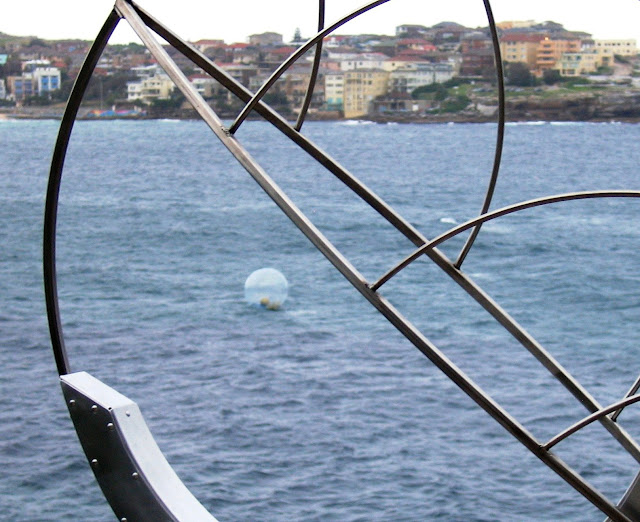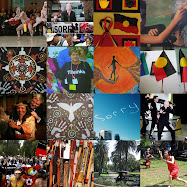

Humpback Gunship by Benjamin Gilbert.
The artist is quoted in
The Australian newspaper (October 15, 2008):
"Yes, it's for children..... "Too much sculpture takes itself too seriously."
However, behind the whale's friendly appearance is a serious message: the body will be filled with "100 per cent pure Tasmanian woodchips".
"They're usually shipped off to Japan," said Gilbert.
I was really interested to discover that Ben Gilbert is renowned as an ice sculptor - something that there's not a lot of , well any really, in Australia! And that he likes people to touch and experience his work; no "Do Not Touch" signs near this work!
Here's more about the artist and his work:

"To prepare his stainless-steel humpback whale for curious fingers, Benjamin Gilbert carefully smoothed away its sharp edges.
Inside the whale's hollow stomach he placed canvas cushions for people to sit on. "I believe art is only valuable when it is used," he says.
"There's no point in having something precious locked away."
Once a campaigner with Greenpeace, Gilbert hopes the interactive nature of his work will help people understand its anti-whaling message. With a propeller extending from its water spout and wheels below its chin and tail, the whale resembles a small gunship.
"The bone structure of the humpback whale has fascinated Japanese scientists for generations," he says. "Perhaps they're really using the whales to make military hardware.
"It's a ridiculous sculpture about the ridiculousness of Japanese whaling." (Sydney Morning Herald, October 16, 2008)
Tomorrow: Where in Wonderland are we?
 Dawn at Marks Park, midway between Tamarama and Bondi. My first "Skywatch Friday" entry.
Dawn at Marks Park, midway between Tamarama and Bondi. My first "Skywatch Friday" entry.





















































